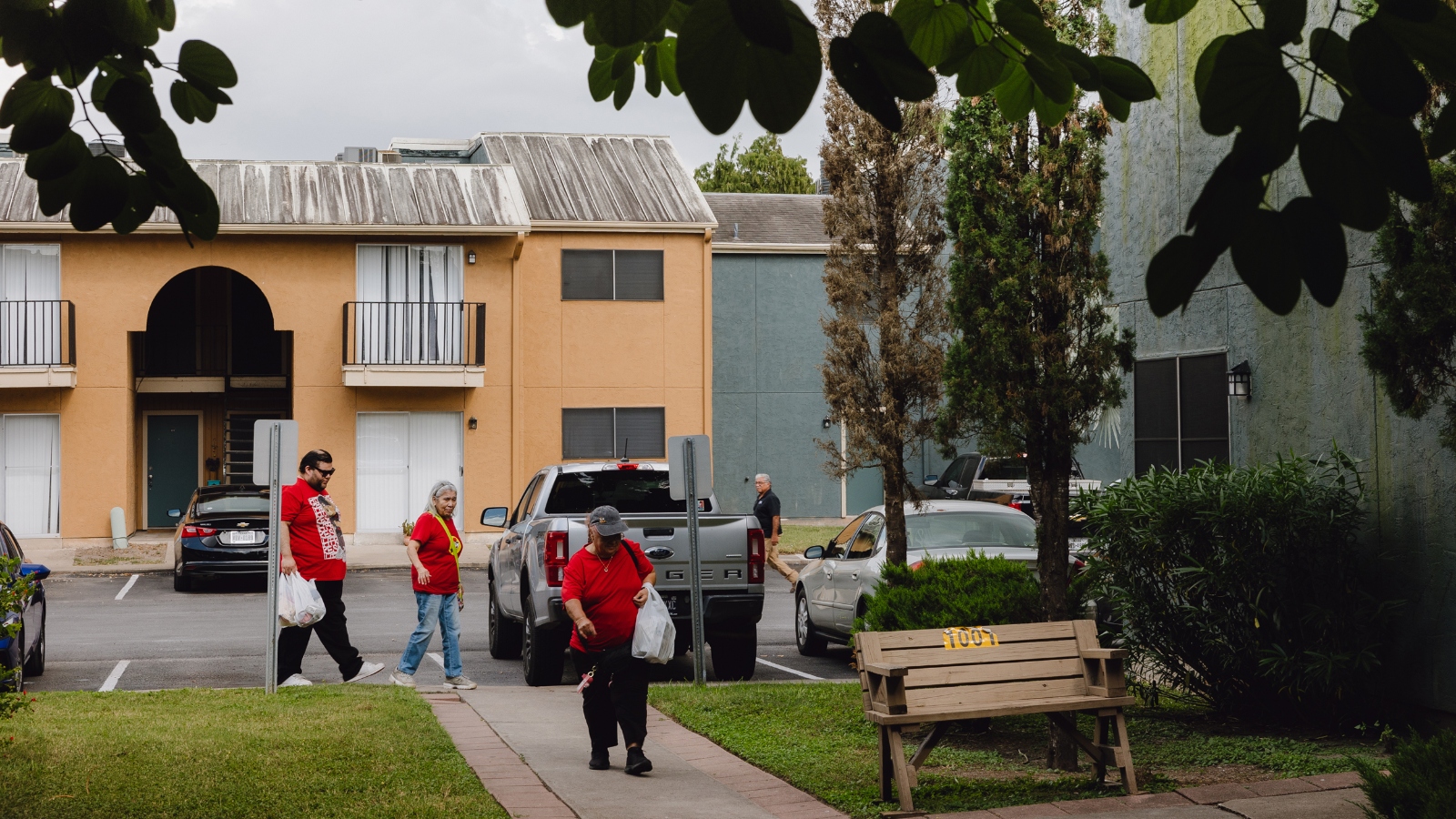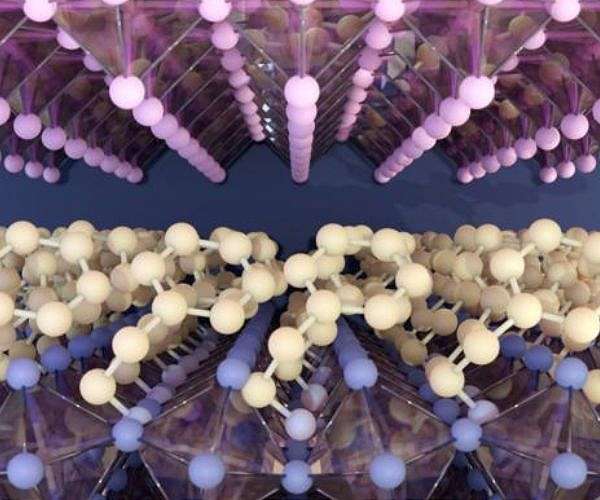
The offshore wind industry in North America stands on the cusp of transformative growth, with considerable progress made toward the U.S. goal to deploy 30 GW of offshore wind by 2030. Yet, as the sector races toward ambitious deployment targets, the critical lens of sustainability has, at times, been overshadowed by the immediate objectives of jobs, costs and energy output. We must not lose sight of the core reason for switching to renewable energy sources – decarbonization.
Heavy seas engulf the Block Island Wind Farm, the first U.S. offshore wind farm. (Photo by Dennis Schroeder / NREL)
When renewable energy projects were first proposed, the carbon emitted throughout a project’s lifecycle was not considered, simply because the reduction in emissions from its operation compared to the status quo was so stark. But now, as we reach an era where renewable energy is common and grid emissions have reduced considerably, there is a growing need to consider the carbon emissions associated with a project’s design, component manufacture, component transportation, construction, maintenance and decommissioning, as well as its operation.
It takes a typical offshore wind project one or more years of operation to reach the “break even” point where its contribution to decarbonization offsets the embodied and operational carbon created by its construction and operation. Material selection, sourcing, transportation and recycling as well as design can have a large effect on the carbon footprint of a project. Every additional ton of embodied carbon is another ton that ultimately must be removed from the environment.
This reality prompts a reflection on the industry’s traditional success metrics – cost efficiency and energy output – and beckons a more robust dialogue around the role of embodied and lifecycle carbon.
Moving beyond traditional sustainability initiatives
The U.S. Department of Energy (DOE) has a relatively active track record when it comes to driving sustainability within the wind industry with several initiatives being supported across design and materials, life extension and recycling. For example, the National Renewable Energy Laboratory (NREL) along with the Oak Ridge National Laboratory (ORNL) are developing novel techniques for wind turbine generator design and manufacturing to reduce the amount of material needed. Meanwhile, last summer, $5.1 million in competition funding was announced to help develop a cost-effective and sustainable recycling industry for fiber-reinforced composites and rare earth elements.
These efforts are a step in the right direction. However, the embodied carbon break-even offset point could be achieved so much more quickly if the industry was able to step away from its cost-per-megawatt capacity focus. However, as it stands, there are no standards set to minimize embodied carbon at an industry, state or federal level.
The simplest way would be for states to make this change as part of their renewable energy procurements. Currently, some states in their requests for proposals ask for embodied and lifecycle carbon information including how projects are seeking to reduce their carbon footprint, but this is typically informational and not used for scoring and selecting projects.
The end goal though would be to value and award projects based on their cost per ton for removing carbon. This would encourage companies to find more cost- and carbon-efficient ways to construct offshore wind while having a positive trickle-down effect on the supply chain. There are many novel designs, materials and construction methods that could be commercialized given the right environment.
Establishing benchmarks and supply chain transparency
When it comes to assessing and reducing the embodied carbon of projects, a key challenge for the global industry remains in that there is currently no standard methodology for industry to calculate the embodied carbon of offshore wind developments. COWI is currently collaborating in the UK on the development of a carbon assessment process and taxonomy for offshore wind. The aim for this project is to provide a consistent, objective and industry-specific method to consider carbon at both the component and project level. The work also looks to understand how potential carbon emissions can be impacted by design decisions and how to identify opportunities for reduction.
This is a vital first step in properly valuing carbon emissions as part of any offshore wind project. Only through transparency and benchmarking can we understand where the biggest areas of opportunity lie for carbon reductions. At the design stage, the engineering team can work collaboratively with the project developer to understand how design and material and supplier choices impact the embodied carbon of the project. Recyclability must also be considered as it has a large impact on a project’s lifetime carbon footprint. Many older designs are significantly less carbon-efficient than what is possible today, and tomorrow’s designs will see improvements too as we take advantage of innovations such as low carbon concrete.
The industry will also need to be cognizant of the impact of the Inflation Reduction Act’s domestic content requirements and its impact on sourcing. Already we see a positive shift away from carbon intensive suppliers of steel from countries such as China that typically use coal-powered blast furnaces vs. more efficient electric arc furnaces typical in the United States, despite carbon reduction not being the aim of the IRA. With intention, the impact could be much greater still, although it also poses a risk. It will be important for the United States to continue to invest in low-carbon research and development and for policymakers to ensure policy does not unnecessarily lock the industry out of new low-carbon options developed domestically or abroad.
Longer term opportunities
A longer-term opportunity for offshore wind is that of recycling and the circular economy. Recycling will play a critical role in reducing offshore wind’s full lifecycle emissions. Recycling can reduce a project’s carbon footprint by 20-25% or more. Offshore wind farms typically have a life expectancy of 25-30 years, much less than typical new nuclear or natural gas power plants. This is because offshore wind foundations, towers, blades and other components are fatigue limited, so reusing foundations and towers and repowering is not viable. Therefore, projects must be decommissioned, recycled and replaced – creating a circular economy. Developing cost-effective ways to remove and recycle monopiles in their entirety, not just the part above the seabed as currently required by BOEM, and buried array and export cables, which are also currently allowed to be left in place, are just a few ways to reduce lifetime carbon emissions. Cost-effective methods to recycle blades is also critical and a key area being worked on.
Uniquely positioned to value carbon
As North America gears up for significant growth in offshore wind, the United States is uniquely positioned to create an industry that properly values the carbon offset contributions of each project. While the country is forging ahead on sustainability, targeted measures are needed to encourage more efficient design and lower carbon materials and construction techniques.
Initiatives such as the forthcoming carbon assessment process offer much needed transparency on embodied carbon and will serve as a guide for policymakers, engineers and developers to maximize offshore wind’s decarbonization potential. With the country’s very first offshore wind projects now powering homes in the Northeast and hundreds more wind turbines under construction offshore, the time for action is now to chart a greener course for offshore wind.
 Greg Matzat is a seasoned ocean engineer with an extensive experience in offshore engineering. Over his career, he has overseen the design, engineering, and construction management of more than 100 vessels globally. His work at the New York State Energy Research and Development Authority and the U.S. Department of Energy contributed to the establishment of the U.S. offshore wind industry. Currently, at COWI, Greg leads business development across North America, focusing on offshore wind and renewable energy engineering services, from feasibility studies to construction management and wind farm optimization.
Greg Matzat is a seasoned ocean engineer with an extensive experience in offshore engineering. Over his career, he has overseen the design, engineering, and construction management of more than 100 vessels globally. His work at the New York State Energy Research and Development Authority and the U.S. Department of Energy contributed to the establishment of the U.S. offshore wind industry. Currently, at COWI, Greg leads business development across North America, focusing on offshore wind and renewable energy engineering services, from feasibility studies to construction management and wind farm optimization.
Filed Under: Featured






